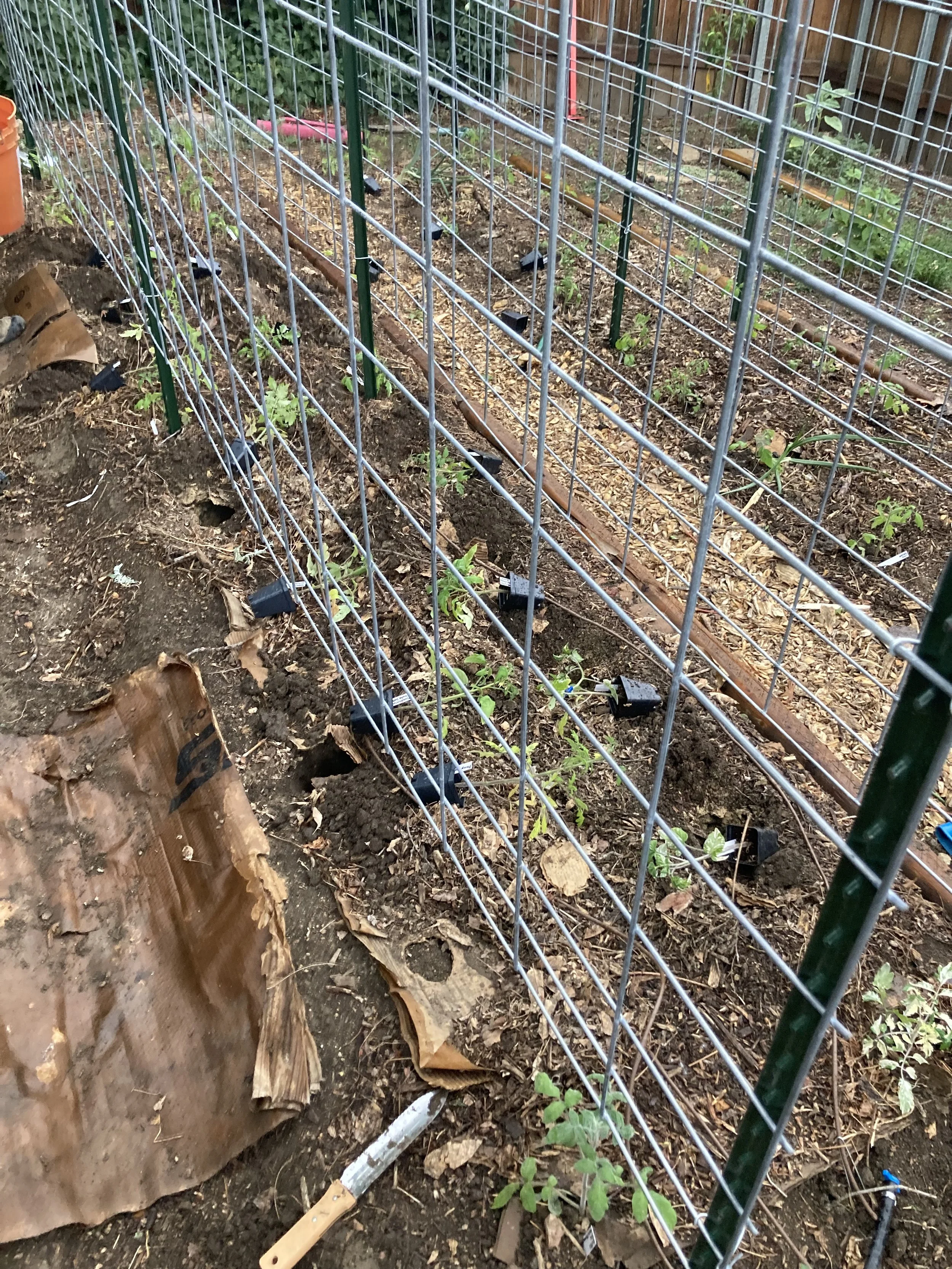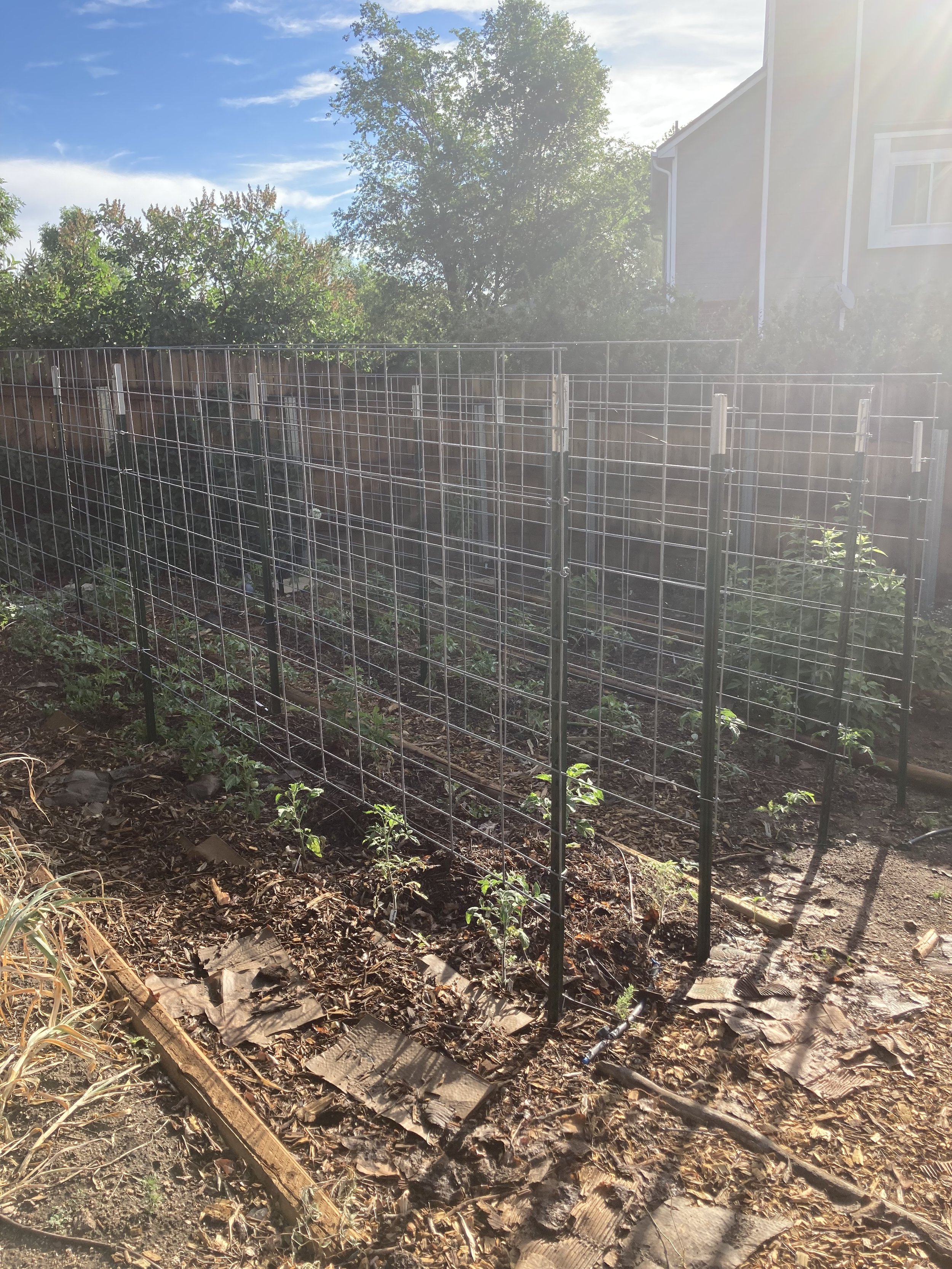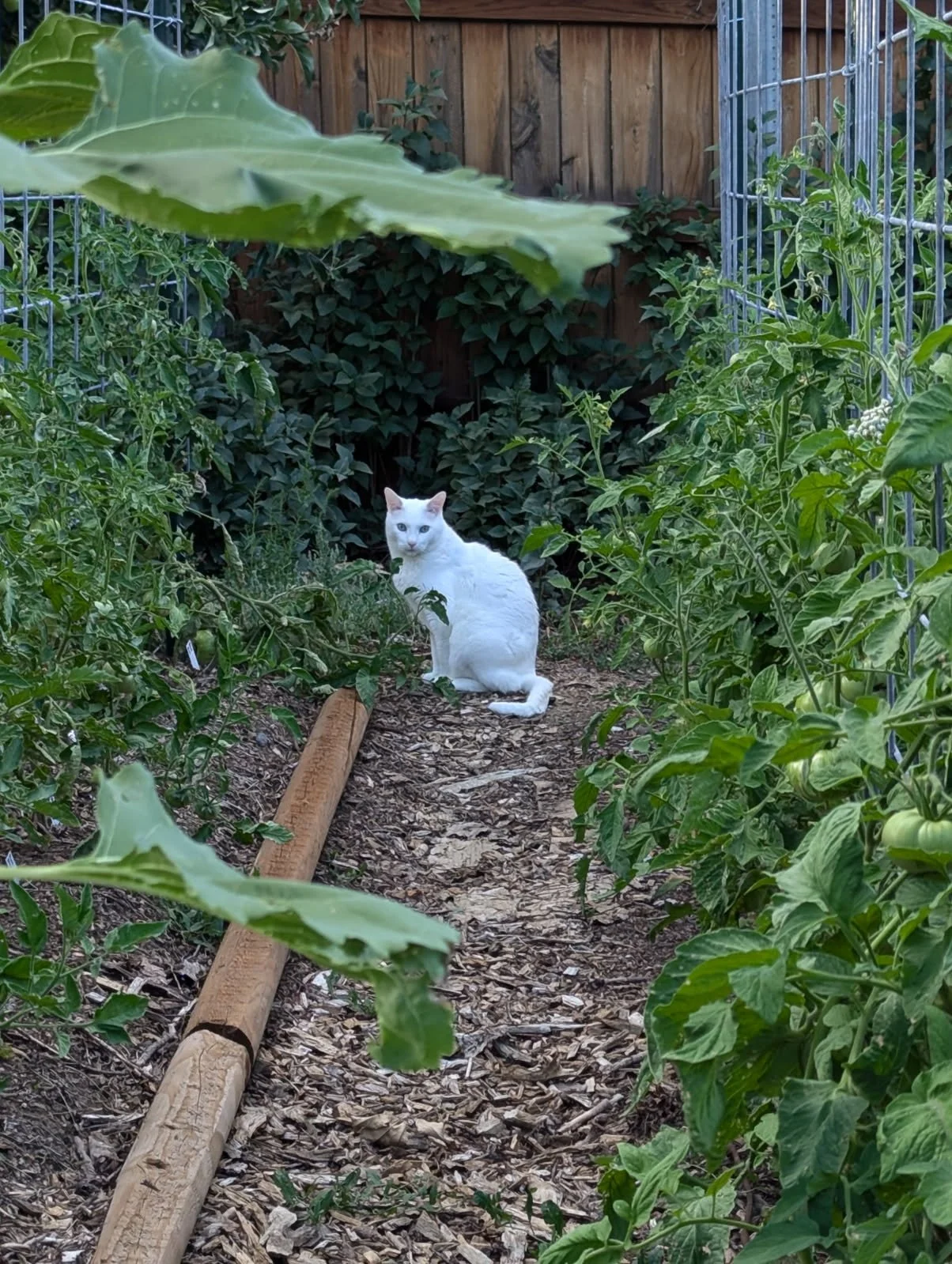Growing Tomatoes on Cattle Panel
Here is a project that we did in our backyard. I’ve had people wondering about it, so I wanted to share how we did it!
Background
In 2023, we defined several long in-ground beds on the northern side of our backyard. There are six 16’ x 4’ beds that run N-S. Part of this area had been covered by river rock that we removed with a skid steer in 2022 when we were doing a bunch of earth work on the yard, the spring after we moved in. In 2023 we grew squash, onion, potatoes, and garlic.
To prepare the beds for 2024, I roughly laid out some landscaping timbers and did some lasagna gardening early in the spring - layering leaves and compost. We put a layer of cardboard down under since we have a problem with bindweed in this area. We had drip irrigation tubing running the lengths of the bed, but I think the pressure wasn't high enough to consistently water the second half of the beds. We will work on this in 2025.
Installing the Cattle Panel
We decided to try out using cattle panel to grow in two of the beds. At the end of May, we went to Big R and bought four 16’ x 4’ cattle panels. Big R employees loaded it into our truck and gave us metal T-post attachments to go with it. We also bought twelve 6’ T- posts.
We chose to put two lengths of cattle panel in each of the four foot wide beds - one foot from the edge, and two feet from the other cattle panel (1+2 +1= 4’ width of bed). My husband used his fence post driver to put one T-post in the middle and ends of each row. We lifted the cattle panel about a foot off the ground and used the attachments to secure it. It all went up within 2 hours.
Growing Tomatoes
I planted 11 tomato plants along each length of cattle panel, for a total of 44. The plants on the ends were 5” from the T-posts, and the rest of the tomato plants were 16-17” apart. Some people grow tomatoes 12” apart with intensive pruning, but I didn’t want to have to single or double stem grow. I did still do a lot of pruning early in the season and cut off all suckers from the bottom foot of the plants. I pruned some suckers above that, but nothing super regimented. Some plants I needed to attach to the main stem initially to the cattle panel, but after that I was able to tuck branches under the cattle panel whenever I walked around the garden. It was very easy to maintain many plants.
There has been no problem with the winds. I think it would be fairly easy to lay hail cloth over these rows, so we may be trying that this year. There were only a couple tomatoes that reached the top of the cattle panel, but those can easily be trained laterally or pruned if needed.
Cattle Panel vs. Cages vs. Florida Weave
I have only tried Florida weave once in 2017 so I don’t have extensive experience with it. I found it to be difficult, probably because I didn’t stay on top of it as much as I needed to, or didn’t prune as much as I needed to. I like using the heavy duty large tomato cages well enough, but wanted to scale up and grow many more tomato plants than I have cages for. I like the cattle panel better than anything else I’ve tried, though I’ll continue to use the cages that I have in raised beds. Quick caveat - I only recommend the large heavy duty cages, usually found at garden centers rather than big box stores. The smaller flimsy ones do not hold up well and just become a headache to manage indeterminate tomatoes later in the season. They are ok for dwarf or determinate varieties, but I don’t recommend for indeterminates (glossary of tomato terms). The heavy duty cages aren’t perfect, but they do the job well enough.
Future Uses
I plan on using one of the 16’ beds for tomatoes again in 2025, and the other I am thinking of doing pole beans and/or winter squash. I also want to try a cattle panel arch over a couple of my raised beds.
Cost Comparison and Conclusion
Here are some sample calculations for supporting a 16’ row of tomatoes.
Cattle Panel: It was $30 for one 16’ x 4’ panel and $8 for each T-post. So each row of cattle panel is $54 to install. Price to support each tomato plant is $4.91.
Florida Weave: Florida weave would be lower cost, but more labor intensive with continuous work weaving the twine. It is subjective and up to personal preference, but some people do a stake between every two plants. So in a hypothetical situation if you wanted to plant along a 16’ row 18” apart (some people do 2’ apart), you could fit 10 plants and would need six T-posts (quick visual representation: |xx|xx|xx|xx|xx| ); 6x$8=$48. Price to support each tomato plant is $4.80.
Tomato Cages: If one heavy duty large tomato cage is $13 (the cost the last time I bought them), and you have to space 18” apart, it would cost $130 to grow 10 plants along a 16’ row. So it is more economical if you want to grow a lot of tomatoes to use cattle panel or Florida weave.
These are my costs locally at hardware stores in 2024, and for the tomato cages in 2016 or 2017, so your costs might be different than mine.
I definitely recommend trying cattle panel if you want to grow a lot of tomatoes, or even squash, cucumbers, melons, and beans. It would probably work for peas too. I also like that the cattle panel is installed and I can keep using it year after year without the effort of weaving and taking down the twine each year. And I continue improving the soil with compost, cover crops, and crop rotation with legumes, so I should be able to use at least one bed (two rows) of cattle panel each growing season.
Hopefully this helps you decide if it’s right for you to invest in, or if you want to give Florida weave a go, you could try that for a season, and see if it fits your needs first. I always encourage experimenting and seeing what you prefer! Below are photos during the growing season. Happy gardening!














